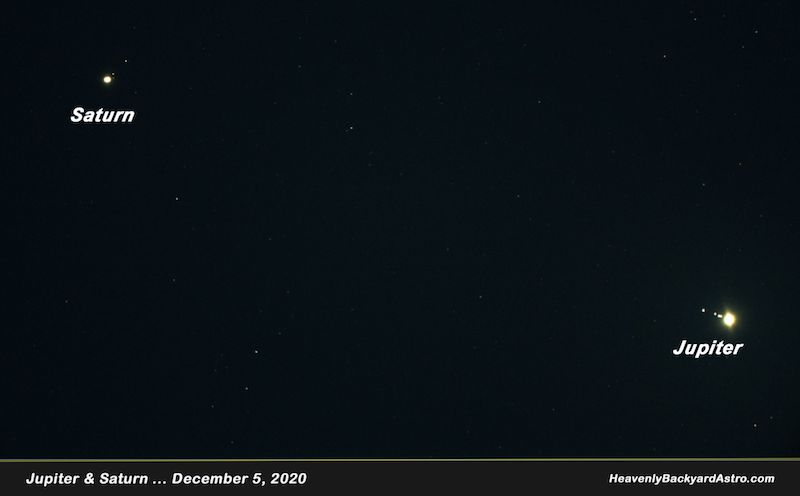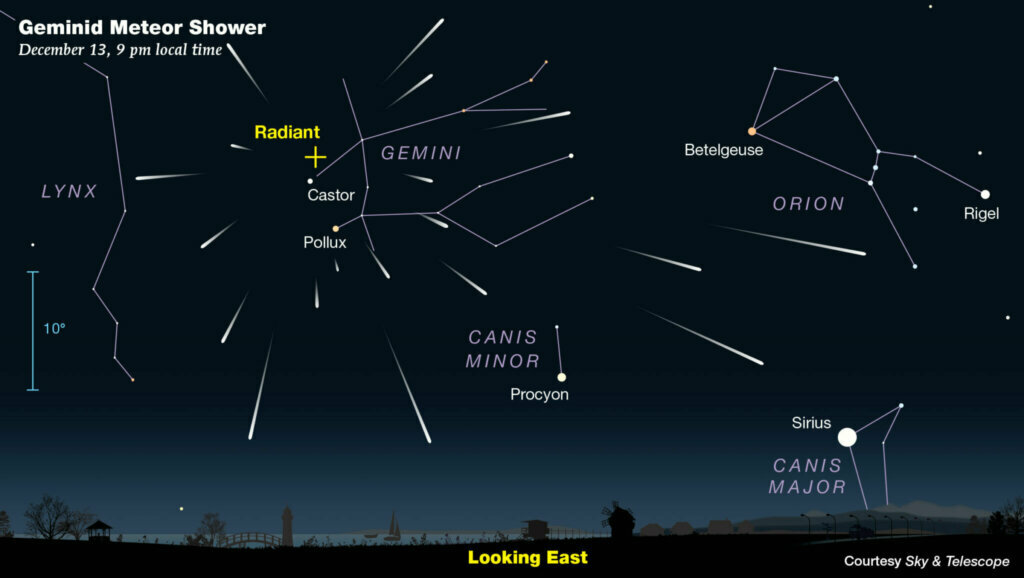Dazzling displays in December’s night skies as we wind down an unforgettable year. Most notably Jupiter and Saturn coming together in a conjunction that hasn’t been seen for almost 400 years and the Geminid Meteor Shower! It’s all below, let’s go:
THE GREAT CONJUNCTION
“Conjunction” is the word used to describe objects coming together in space. Obviously two planets aren’t going to literally come together - that would be phenomenal and a little terrifying and we probably wouldn’t be speaking so excited & light-hearted about it. Conjunction is just two planets that move near one another as seen from Earth. Jupiter and Saturn will do this in Mid-December. According to EarthSky, Jupiter and Saturn will be less than 1 degree apart - this is the closest they’ve been since 1623! There are many different theories and explanations for the “Star of Bethlehem” that led Magi to the birth of Jesus Christ in the Bible as outlined by Space.com - including comets, meteors, a fireball, a supernova, and...planets close together. I watched a documentary several years ago showing the argument for why the Star of Bethlehem was actually a couple of planets that were really close together, but there’s a small part of me that believes it was something more spectacular. Even though two planets “converging” is pretty awesome, I have to believe the Bible story had a wilder spectacle. Maybe I’m wrong. Personally, this topic is very fascinating to me and I’m very curious to see what this conjunction actually looks like. Some websites indicate it will just look like an elongated star or two different, distinct stars. But we’ll see! I can’t wait.
Maybe you’ve already seen Jupiter and Saturn close by one another in the western evening sky, they’re only going to get closer together and by the Winter Solstice, (yes, just so happens that conjunction happens on the Solstice, ironic) they will be at their closest point to one another.

Courtesy EarthSky.org. Jupiter and Saturn near conjunction and the crescent moon will be getting in on the act too. According to EarthSky: from December 16-25, 2020, the 2 will be separated by less than a full-moon diameter, just as the crescent moon is passing close. Jupiter will appear brighter, outshining Saturn by 12 times. Saturn is respectably bright, though, shining as brilliantly as a 1st-magnitude star.
This picture below of Saturn and Jupiter is incredible. You can see multiple moons around BOTH Saturn and Jupiter, holy wow. Obviously anyone with a telescope and a clear sky is in for a treat with this conjunction. “Jupiter and Saturn are very near each other in the southwestern evening sky. Even though these 2 look to be separated in this telescopic view, they appear very near each other in the sky. You can even see 4 of the Galilean moon of Jupiter and 3 moons of Saturn.” - Photo Credit and Quote from Patrick Prokop and EarthSky:

GEMINID METEOR SHOWER
The Geminids are typically the most active meteor shower of the year. December’s own show peaks the night of December 13 & 14. As depicted in the image below, look east and find Gemini. Gemini-Geminids: it only makes sense! Gemini is the twins standing next to each other (which is kinda hard to make out because they’re sideways from our vantage point). Experts say meteor activity peaks around 2 A.M. local time the morning of December 14. As long as the sky stays clear, enjoy the show! The crescent moon won’t be hogging light up in the sky, and hopefully clouds can avoid the area. Stay tuned to the latest First Alert Forecast. And a disclaimer: the image below is NOT what the sky will look like (that would be insane) but typically you can see 50 meteors per hour, just under one per minute. Under the right sky conditions (complete darkness, etc) one can see up to 150 meteors per hour during the Geminids.

From Sky & Telescope: Geminid meteors can flash into view anywhere in the late-night sky. But if you follow their paths back far enough, they all appear to diverge from a point in the constellation Gemini. The meteors’ perspective point of origin is called the shower’s radiant. Don’t expect to see several meteors at once! This diagram is meant only to show their divergence from the radiant point. (Courtesy of Sky & Telescope/Gregg Dinderman)
Cox Media Group





